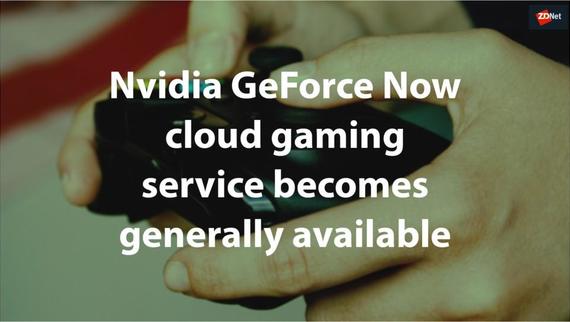When the world moved inside a year ago, it bought a lot of devices and consumed a lot of digital services. For some, like streaming video, the pandemic simply cemented its place in our lives and offered a chance to step up its prominence as theaters closed. For some, like video chat, COVID-19 ramped up its usage from occasional to everyday.
And for some, the quarantine served as a cradle, providing a gentler launch into adoption. Such has been the case for streaming game services. While Amazon’s Luna got out of the gate, Google is pushing Stadia in a new direction. Microsoft, however, recently doubled down, adding a host of Bethesda titles to Xbox Game Pass, which includes its cloud gaming service, formerly known as Project xCloud. And then there’s Nvidia’s GeForceNow, which recently announced that it had reached nine million members around the globe.
As is the case for many digital services that have grown during the pandemic, the question is whether it can keep up its momentum as vaccinations proliferate and more “real world” entertainment options become available again. In addition to maintaining its limited free tier, Nvidia has now introduced a Priority membership at $10 per month or $100 per year; early adopters that signed up under the service’s Founders’ plan get to keep their promotional pricing of $5 per month indefinitely.
A few factors should continue to serve the company well. Beyond marketing campaigns, the company has opened up new avenues for growth. Among these are enabling GeForceNow in browsers, a strategy I wrote about last November. This has enabled Nvidia to tap into the massive Chromebook growth that has propelled Google’s laptop platform sales past Macs as well as provided a way onto Apple’s platforms where the app store provides the only gateway.
That said, the Mac has also been a prime target for services like GeForceNow, particularly in the short term as we can expect some transitional time as developers get up to speed. Even as Apple smooths out iPad app compatibility on its M1-based Macs, iPads have not attracted the kinds of Triple-A titles that cater to gaming PCs. And as much as Nvidia would love to see its OEM partners sell lots of RTX-equipped gaming laptops, there will still be a large addressable market in aging PCs as well as unaccelerated laptops.
It’s too early to tell whether streaming gaming services will be like streaming video services that have seen membership upticks in response to new seasons of mega-hits as HBO did with Game of Thrones. But Nvidia notes that the availability of Cyberpunk 2077 on the platform was a draw. Speaking of that title’s troubled launch, the limited availability of next-gen consoles should continue for another few months, providing another window for the growth of streaming game services, one that likely tips in Nvidia’s favor as much of Microsoft’s offering is particularly relevant to Xbox owners. Today, Nvidia has a niche option for playing GeForce Now on TVs with its surprisingly persevering Shield TV Android device. But the company is bringing the service to more smart TV platforms such as Samsung’s and LG’s. And as I’ve blogged, Roku could become an attractive partner.
Smart TV deployment raises one of the greatest opportunities and challenges of moving game streaming services beyond PCs: The lack of controllers or even keyboards. At least with smart TVs, a standard Bluetooth affair can address the issue. Things are a bit trickier on the smartphone side where even acclaimed controllers like the Razer Kishi add significant width and bulk to smartphones. But Nvidia notes that more developers are recognizing the value of having touch control in mind even in their PC games. And streaming game services may be among the best digital service fits for 5G. Unlike streaming video services, they can make a strong case for the higher speed and lower latency of 5G services. And unlike real-time augmented and virtual reality experiences, they don’t rely on a friendlier generation of headsets that are years away from mainstream consumer usage.
PREVIOUS AND RELATED CONTENT
Meet 2021’s hot new platform for the most graphically intense games: The browser
Apple’s app store policies have driven Amazon and now Nvidia to bring their cloud gaming services to Safari on iOS. Other services are bound to follow.
Cloud gaming, not Fortnite, poses the longer-term app challenge for Apple
While Epic Games and its allies have challenged the nature of app stores, buffet-style cloud services challenge the future of apps themselves.
Cloud gaming, not Fortnite, poses the longer-term app challenge for Apple
While Epic Games and its allies have challenged the nature of app stores, buffet-style cloud services challenge the future of apps themselves.



